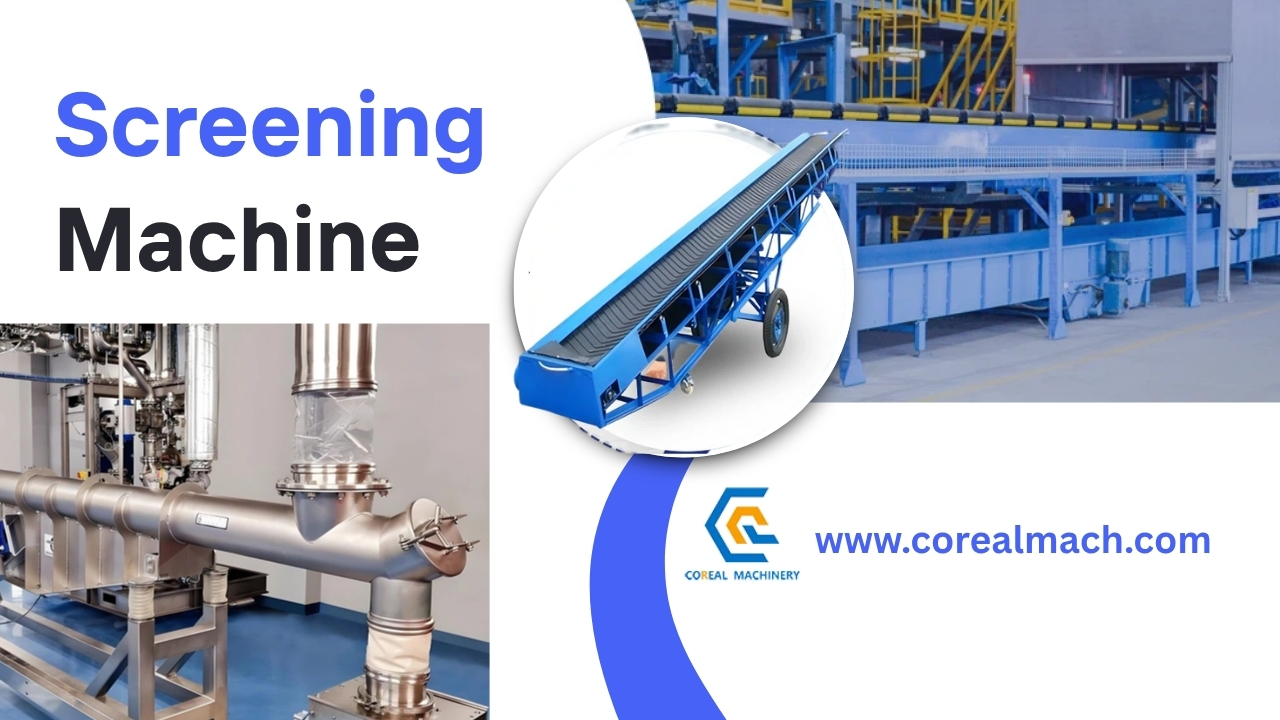A conveying machine or conveyor—is a vital device in industries from manufacturing to logistics. Whether you’re transporting bulk materials like grains or heavy components on a warehouse floor, conveying machine provide efficient and reliable movement. In this comprehensive guide, we’ll explore what conveying machines are, how they work, their types, applications, advantages, design considerations, and future trends. By the end, you’ll have a full understanding of how these machines drive productivity across sectors.
What Is a Conveying Machine?
A conveying machine is a mechanical apparatus designed to transport materials or goods from one location to another—sometimes over long or complex routes. Conveyors reduce manual labor, speed up workflows, and maintain product quality by limiting handling.
Key Components:
-
Driving unit: The motor and gearbox that power the system.
-
Medium: Depending on type, this could be belts, rollers, chains, or air currents.
-
Frame and support: The structure holding the components in place.
-
Controls: Systems for stopping, starting, and regulating speed or direction.
How Conveying Machines Work
Conveyors operate by applying continuous movement through driven or gravity-assisted systems. Here’s how typical belt and roller conveyors work:
-
An electric motor drives a pulley or chain mechanism.
-
This motion moves the belt or roller assembly.
-
Load from point A transfers to point B smoothly.
-
Optional sensors and controls allow automated flow, avoiding jams or overloads.
In other systems—like pneumatic conveyors—air pressure moves bulk materials through tubes, while vibratory conveyors rely on controlled shaking to move products.
Common Types of Conveying Machines
The type of conveying machine chosen depends on the material, environment, and operational goals. Here are the main categories:
Belt Conveyors
-
Use continuous belts made from rubber, PVC, or metal.
-
Ideal for packaging, manufacturing, and multi-directional layouts.
Roller Conveyors
-
Feature rotating cylinders (rollers) powered or gravity-driven.
-
Common in sorting, warehousing, and shipping facilities.
Chain Conveyors
-
Strong steel chains carry heavier loads or items with irregular shapes.
-
Used in automotive, steel, and assembly-line systems.
Screw (Auger) Conveyors
-
Helical blades rotate inside a tube to move bulk materials like grains.
-
Found often in food processing, agriculture, and chemical industries.
Pneumatic Conveyors
-
Utilize air pressure or vacuum to push materials through pipelines.
-
Suited for powdered or dusty products in food, pharmaceuticals, or cement.
Vibratory Conveyors
-
Use vibration to induce movement of materials in troughs or trays.
-
Great for small, delicate items or paced feeding operations.
Overhead (Monorail) Conveyors
-
Suspend items from ceilings along tracks or rails.
-
Efficient for painting lines, assembly operations, or distribution centers.
Applications Across Industries
Conveying machines are indispensable in modern facilities:
-
Manufacturing: Transporting car parts, electronics, or appliances between assembly stations.
-
Food & Beverage: Moving grains, beverages, or packaged goods through processing and packaging lines.
-
Mining & Construction: Transferring bulk minerals or aggregates from extraction sites to processing zones.
-
Warehousing & Logistics: Sorting parcels, loading trucks, and cross-docking operations.
-
Pharmaceuticals: Handling granular powders, capsules, or vials with hygienic systems.
Advantages of Conveying Machines
Efficiency & Speed: Continuous movement allows fast transit without stops.
Labor Savings: Many operations become automated, reducing manpower needs.
Safety & Ergonomics: Minimize manual lifting and reduce the risk of injuries.
Clean & Controlled Handling: Especially important in food, pharma, and clean environments.
Scalability & Modularity: Systems can expand or adapt to changing needs.
Design Considerations Before Choosing a Conveyor
When planning a conveying system, consider the following:
-
Material Characteristics: Weight, size, shape, fragility, abrasiveness, or dust potential.
-
Throughput Requirements: The volume you need to move—per hour or per day.
-
Layout & Path: Straight vs. curved, inclined vs. flat, floor vs. overhead.
-
Environment: Temperature extremes, moisture, corrosive conditions, hygiene standards.
-
Maintenance Needs: Access for lubrication, belt changes, wear-and-tear components.
-
Energy Usage: Power consumption and potential for regenerative systems or backup.
Installation & Maintenance Best Practices
-
Proper Alignment: Misaligned belts or chains lead to premature failure.
-
Routine Inspection: Check for wear, tension irregularities, and noise.
-
Cleaning: Remove debris to prevent jams or contamination.
-
Component Replacement: Change worn parts—bearings, rollers, belts—on schedule.
-
Safety Safeguards: Use guards, emergency stops, and training for operators.
Future Trends in Conveying Technology
The conveying industry is advancing with technology:
-
Smart Conveyors: IoT-enabled sensors for real-time monitoring of load, wear, and efficiency.
-
Predictive Maintenance: Data analytics to predict failures before they occur.
-
Automation Integration: Conveyors interfacing with robotics, AGVs, or sort-ation systems.
-
Energy Efficiency: Regenerative drives and optimized motor sizing to reduce power use.
-
Modular Systems: Plug-and-play conveyors for fast reconfiguration in agile facilities.
Real-World Examples
-
A major e-commerce warehouse uses overhead conveyor lines guided by AI to optimize parcel sorting.
-
Grain silos with screw conveyors feed continuous streams into pneumatic systems for dust-controlled transfer.
-
Automotive plants rely on chain conveyors in paint shops, handling heavy car bodies in a dust-free environment.
Conclusion
Conveying machines form the backbone of modern material handling. By linking operations—from raw material intake to finished product dispatch—they enhance efficiency, safety, and scalability. Whether you’re managing a small packaging line or a complex industrial plant, understanding the types, design factors, and evolving tech trends of conveyors will help you choose and optimize the right solution.

